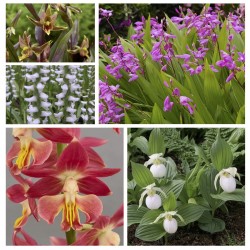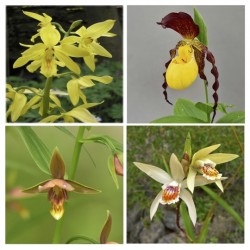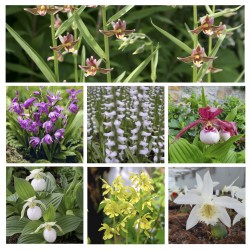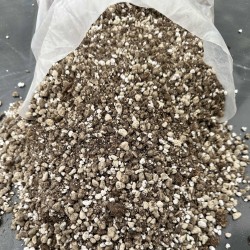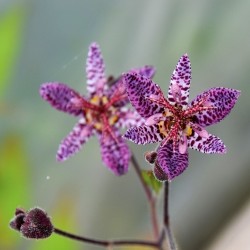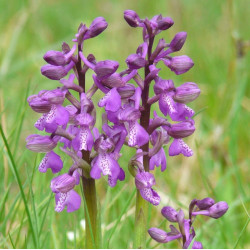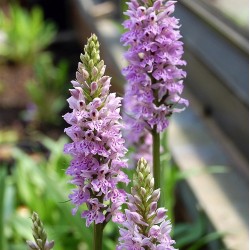No products
Product successfully added to your shopping cart
There are 0 items in your cart. There is 1 item in your cart.
Dactylorhiza Orchids 4 Pack - Orchis Garden
Phytesia is temporarily offering an assortment of 4 Dactylorhiza composed of the following varieties :
By buying this product you can collect up to 5 loyalty points. Your cart will total 5 points that can be converted into a voucher of 1,00 €.
- Remove this product from my favorite's list.
- Add this product to my list of favorites.
- Send to a friend
Data sheet
| Range | Easy Garden |
| Color | Pink-mauve, Red-purple |
| Flowering | May, June |
| Height | 30-40 cm, 40-60 cm, 60-80 cm |
| Exposure | Sun, Semi-shade |
| Hardiness | Hardy (-20°C) |
| Presentation | 9 cm pot, flowering size plant, 3-4 shoots |
More info
Planting
Dactylorhiza demand rich and well-aired substrate because they need from the freshness and from the humidity. Most Dactylorhiza are fond of wet to sodden areas and can be cultivated at the banks of ponds or bodies of water.
For optimal results, Phytesia also recommends a specific substrate for garden orchids of the genus Dactylorhiza. This ready-to-use mixture (5L Sack/14.90 euros) is suitable for planting 2 or 3 garden orchids.
Exposure
Dactylorhiza adapt to the sun (if the soil remains moist) as partial shade.
Growth Phase…
During the winter, the plant persists in bulb form. Dactylorhiza are very cold-resistant orchids and do not require any special protection in winter.
The Dactylorhiza plants emerge as of April and spread their foliage during spring. The flowers appear at the end of spring (May, June).
In autumn, the foliage yellows then fades before disappearing completely for the winter dormancy period. Over the years and following the successive growth and dormancy cycles, Dactylorhiza not only become stronger but also multiply, thanks to the annual appearance of new bulbs.
Comments (
15 other products in the same category:
Customers who bought this product also bought:
Pack content
1 x Dactylorhiza maculata - Heath Spotted-Orchid
A good dactylorhiza producing an elegant flower with a broad lip. This tuberous perennial orchids is found on a range of well-drained or wet acidic soils in a wide variety of habitats, including grasslands, moors, heaths, flushes and bogs. A good choice for the edge of a pond or a damp grassland situation.
15,94 €In stock1 x Dactylorhiza majalis - Western Marsh Orchid
Known as the Western Marsh Orchid this dactylorhiza is extremely variable but it does usually have spotted leaves. It does best in wet grassland areas or on the edge of ponds or streams.
15,00 €In stock1 x Dactylorhiza fuchsii - Common Spotted-Orchid
This is the UK native wild Common Spotted which grows in neutral to alkaline soils which are often damp. Can be grow in grassland, the garden or a pot. It is a good beginners orchid as it will usually bulk up fairly quickly.
12,65 € 14,06 € -10%In stock1 x Dactylorhiza pardalina
Dactylorhiza pardalina, also known as Dactylorhiza praetermissa var Junialis, is a common European orchid species. It is native to northern and central Europe (Great Britain, Denmark, Norway, Sweden, Germany, the Netherlands, Belgium, France and the Baltic republics). This terrestrial orchid is a hardy plant (up to 60 cm) with fairly dense spikes of...
15,94 €In stock



